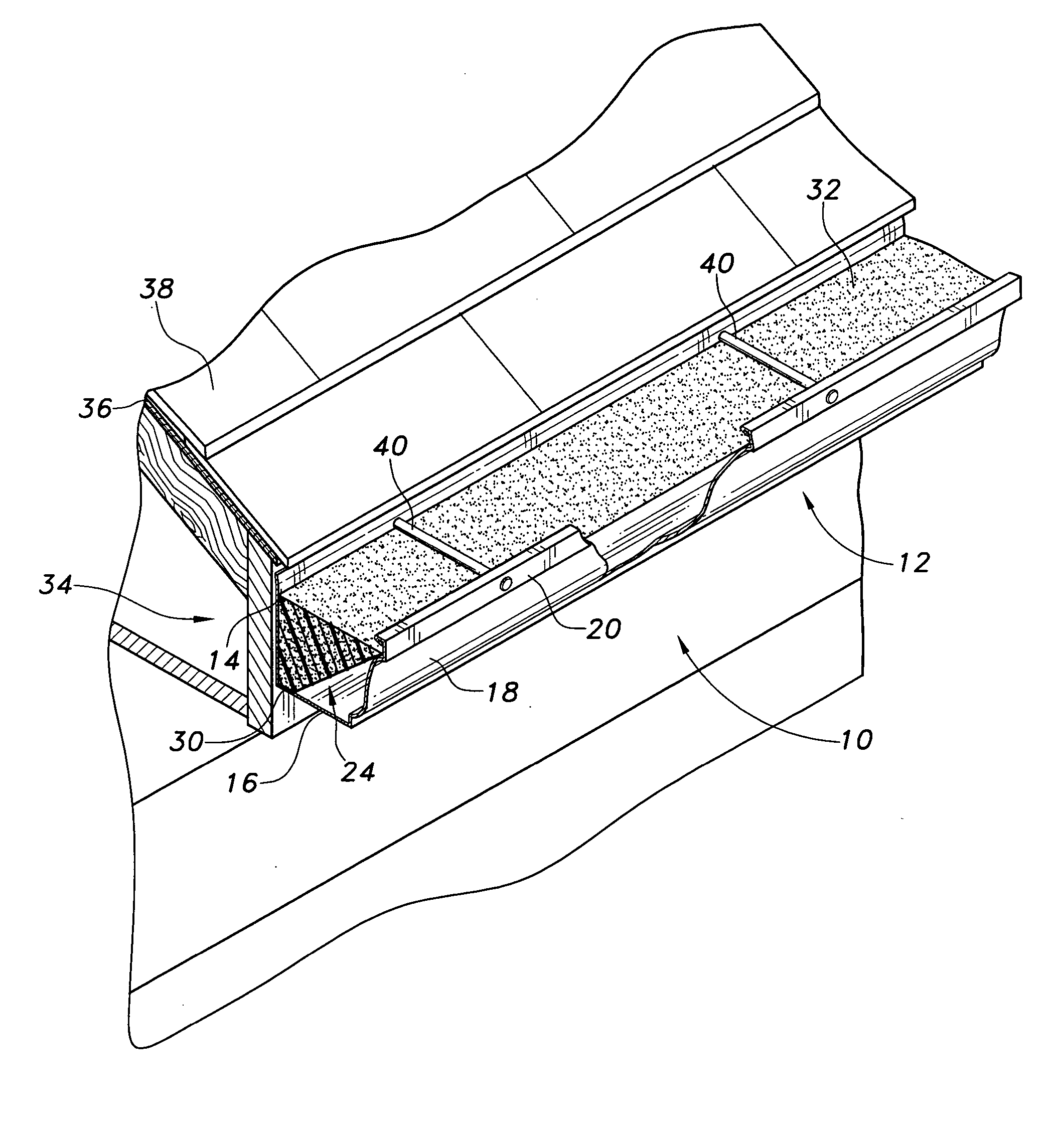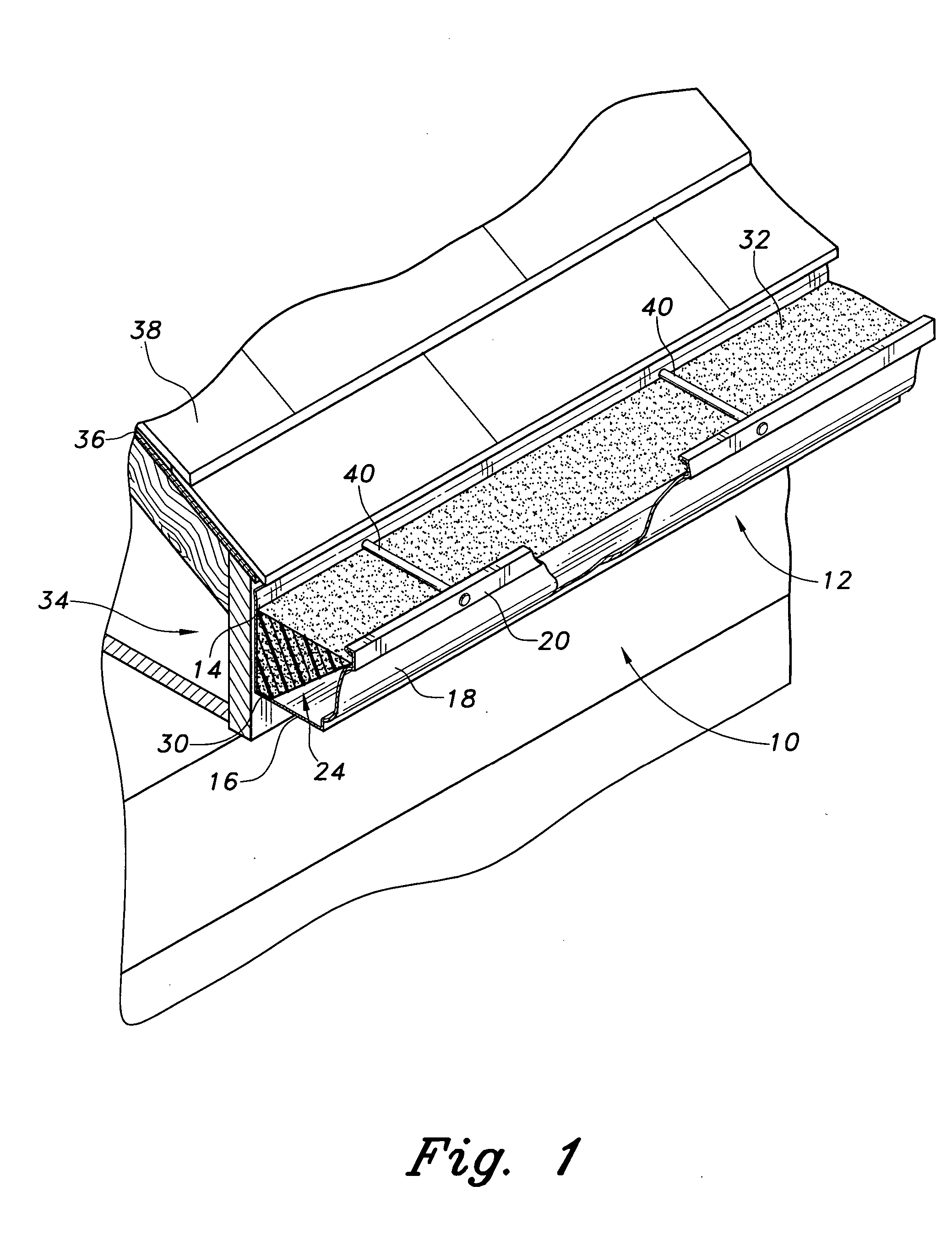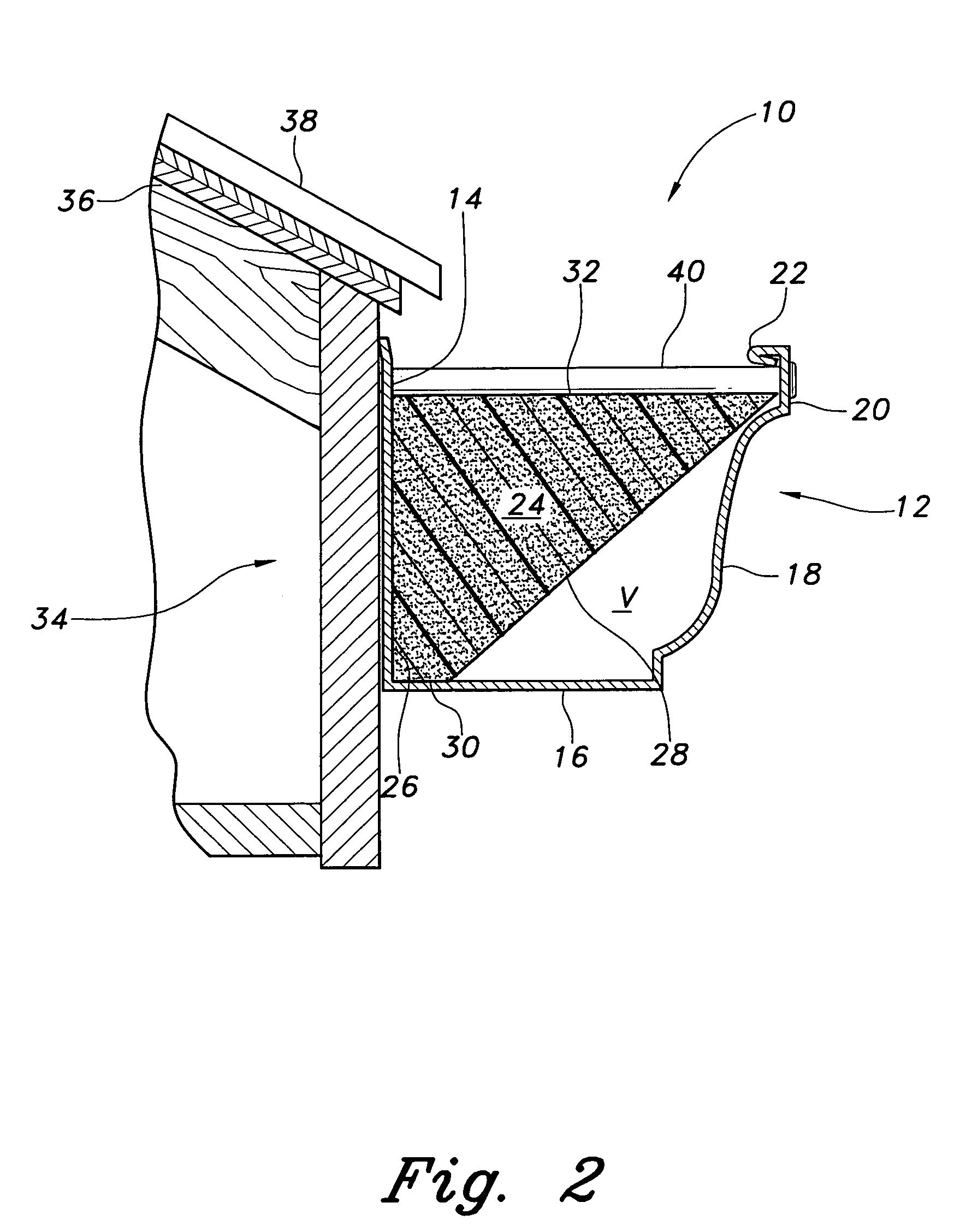Gutter foam filter
a filter and gutter technology, applied in the field of gutter foam filter, can solve the problems of gutter and downspout system overflow, leaf catchment and embedded in perforations, paper scraps, etc., and achieve the effect of convenient cutting
- Summary
- Abstract
- Description
- Claims
- Application Information
AI Technical Summary
Benefits of technology
Problems solved by technology
Method used
Image
Examples
Embodiment Construction
[0023] The gutter foam filter elements of the present invention are generally triangular lengths of plastic foam material placed in and extending the length of a conventional “K” type gutter located at the base of the roof of a dwelling or other building. The foam material is preferably supplied in four-foot sections and the required number of sections of foam are stuffed within the gutter so as to extend its full length.
[0024] Referring to the Figures, the inventive gutter system is generally referred to by element number 10. Gutter system 10 includes gutter 12 which is connected at corners and leads to downspouts in a conventional manner. Gutter 12 has a back wall 14, a bottom wall 16, and a front wall 18. Gutter front wall 18 has an upper lip 20 having an inward and downward pointing inner lip portion 22. The space between the upper lip 20 and the back wall 14 is open to receive rainwater runoff from roof 36. The inventive foam filter insert 24 has the general cross section of a...
PUM
| Property | Measurement | Unit |
|---|---|---|
| length | aaaaa | aaaaa |
| flexible | aaaaa | aaaaa |
| length | aaaaa | aaaaa |
Abstract
Description
Claims
Application Information
 Login to View More
Login to View More - R&D
- Intellectual Property
- Life Sciences
- Materials
- Tech Scout
- Unparalleled Data Quality
- Higher Quality Content
- 60% Fewer Hallucinations
Browse by: Latest US Patents, China's latest patents, Technical Efficacy Thesaurus, Application Domain, Technology Topic, Popular Technical Reports.
© 2025 PatSnap. All rights reserved.Legal|Privacy policy|Modern Slavery Act Transparency Statement|Sitemap|About US| Contact US: help@patsnap.com



